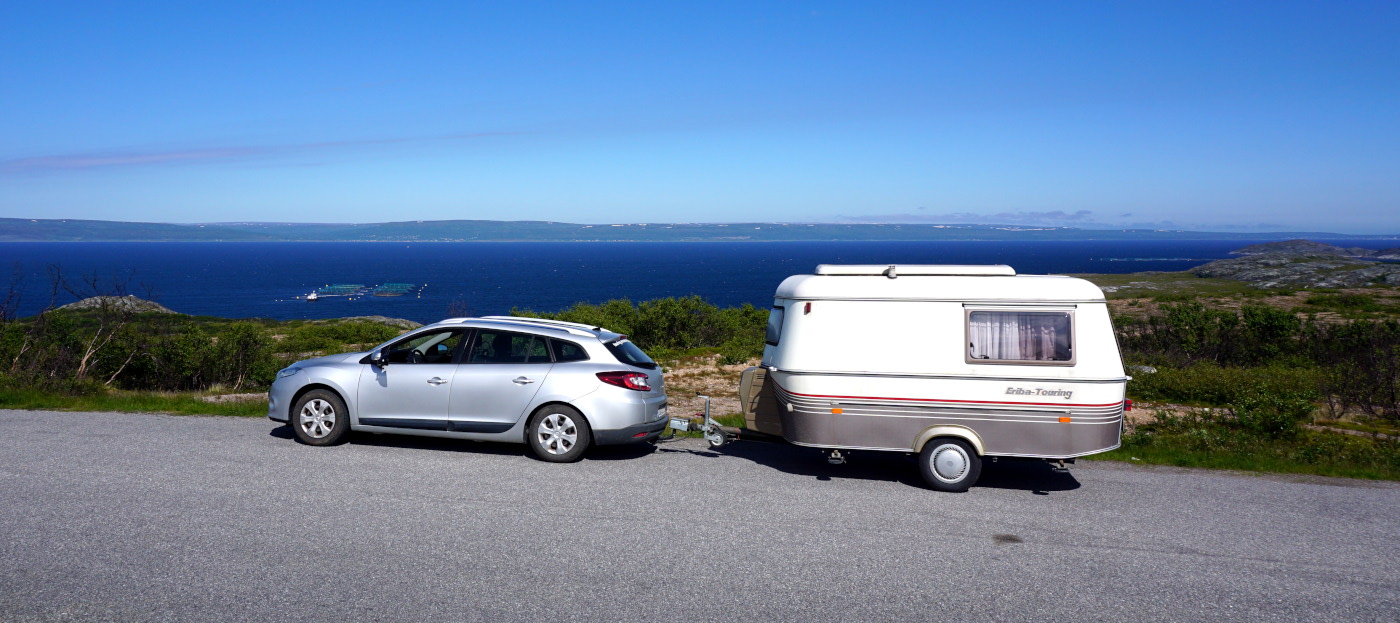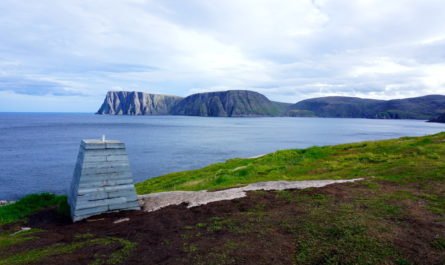After 6 weeks (to the day), we left the Swedish Kingdom behind for the first time. Expressed in the national language, the origin of the name is easy to recognise. Sverige or Svea Rike means Kingdom of the Svea and the Svear were one of three known tribes on the territory of today’s Sweden.
On the way to our overnight stop in Finland, we stopped at Harsprångsfallet. This so-called döda fallet (dead waterfall) was “created” by the construction of a dam in the course of the river Luleälven. The sight was impressive, but also somehow surreal. In 1972, a similar “intervention” on the upper course of the river enraged the entire Swedish and Sami population to such an extent that the remaining four rivers, which were completely unregulated up to that point, were placed under nature conservation. Despite all this, Sweden nowadays generates a good 46% of its energy from hydropower alone, of which almost a quarter is produced on the Luleälv.



At the second Finnish campsite we stayed a little longer again. The reason for this was the proximity to the town of Karasjok, unofficial capital of the cross-border country of the Sámi people, the Sápmi.

First, we took part in a guided tour of the Sápmi Park. Members of this people talk about their traditional and modern way of life as well as their original beliefs. By the way, the Sámi are the only indigenous people in Europe. Afterwards we visited the Sametinget. Since 1989, this has been the seat of the autonomous parliament of the Norwegian Sami people, which is elected every four years. The architecture of the plenary hall is based on the lávvu, a Sámi tent.

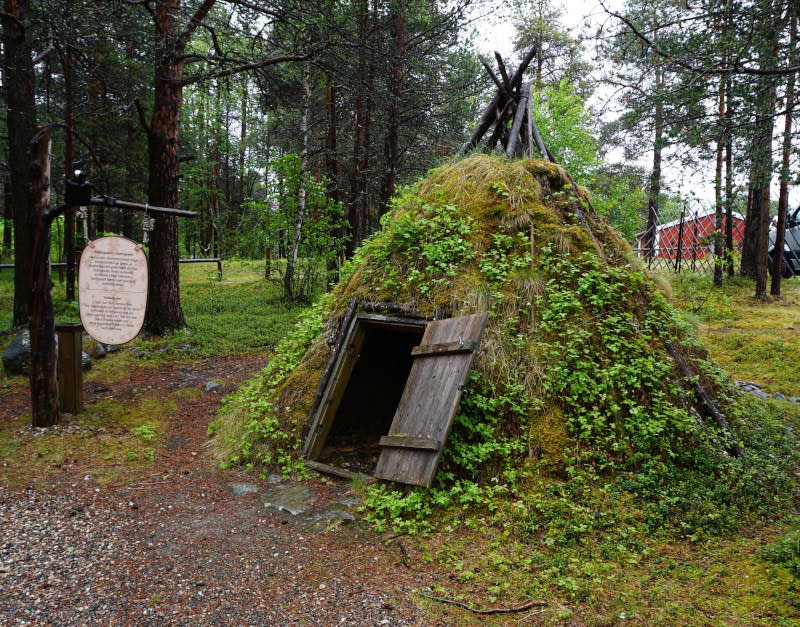






For the next intermediate stage, we decided to take the most beautiful road in Finland. This leads from Karigasniemi to Utsjoki, always directly along the east bank of the Tanaelva.


After the “one-night-stand” 😉 on our first place on Norwegian territory, we drove further into the Pasvik valley. On the way we climbed a wooden observation tower from the times of the cold war.




In Øvre Pasvik nasjonalpark, for once not a natural phenomenon but a “man-made sight” awaited us at the end of the 5-kilometre hiking trail. This is the world’s only tri-border area with 3 time zones. The Norwegian military is also present here with 2 soldiers. They were very friendly and even answered our questions.
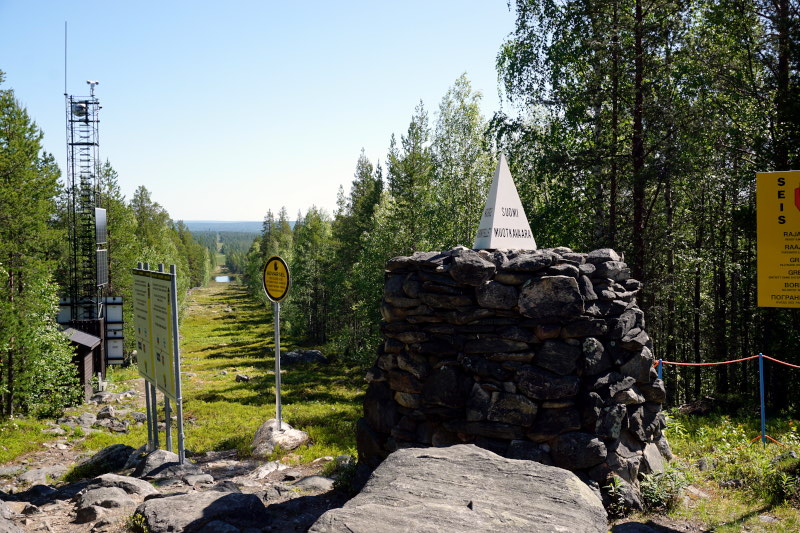
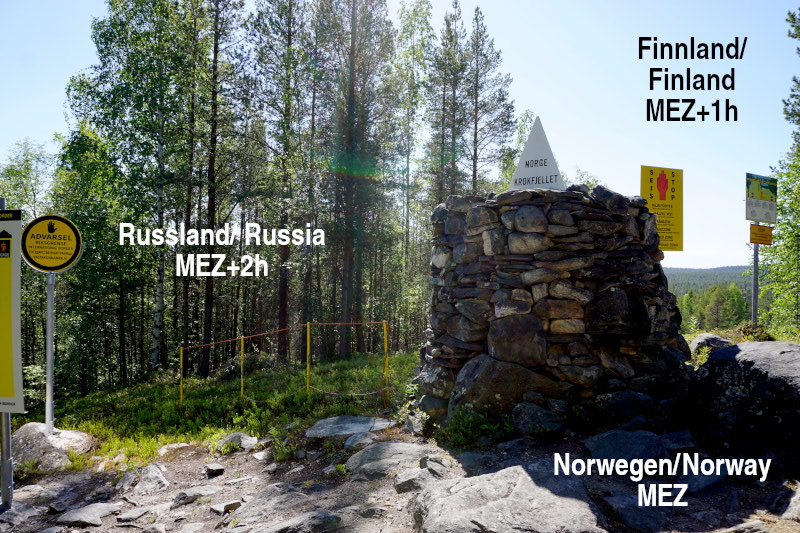
unique in the world
Welcome “interruptions” on our return trip towards Varangerfjord were the Skoltefossen waterfall, Neiden kapell and the lonely expanses of Finnmark. This is not only the largest region in Norway in terms of area, but also the least populated.
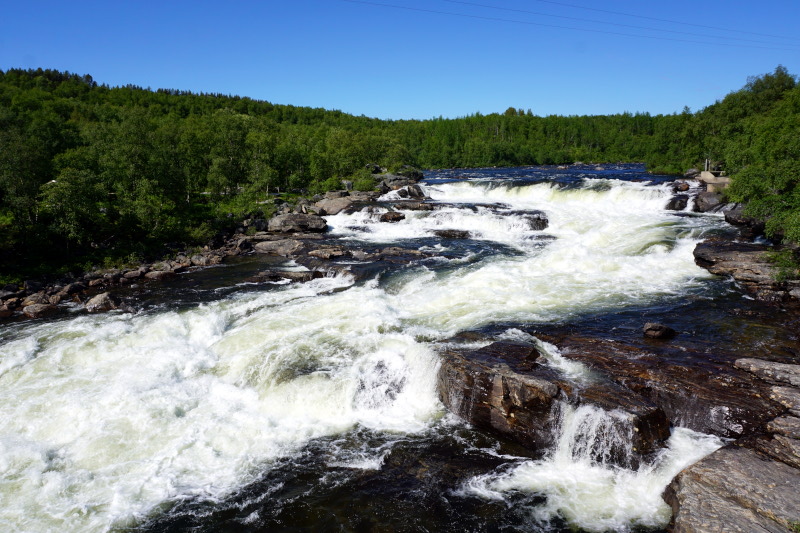





Our campsite was located directly on a national tourist road, of which there are 18 in the country. These roads, designated by the National Road Administration, open up Norway’s unique nature off the main traffic routes. First we stopped at the nature reserve on the peninsula of the same name, Ekkerøy. More than 50,000 pairs of over 50 different species of birds nest on its cliffs, some of which are steep.




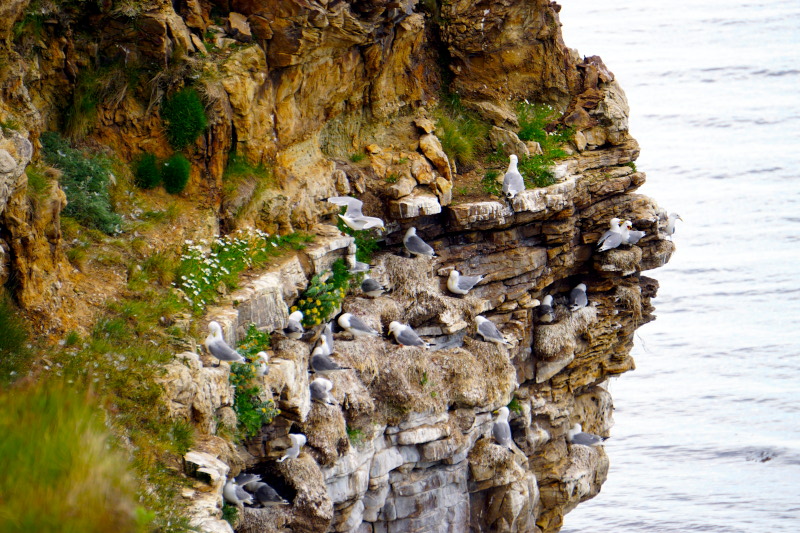

Then we continued on to Hamningberg. Not only the end of the tourist road, but also the actual end of this roadway. So it was the perfect opportunity to unpack lunch and enjoy the great weather. We had 27°C (with a cloudless sky) with a light wind typical of the coast. And they say it’s always cold in the north 😉




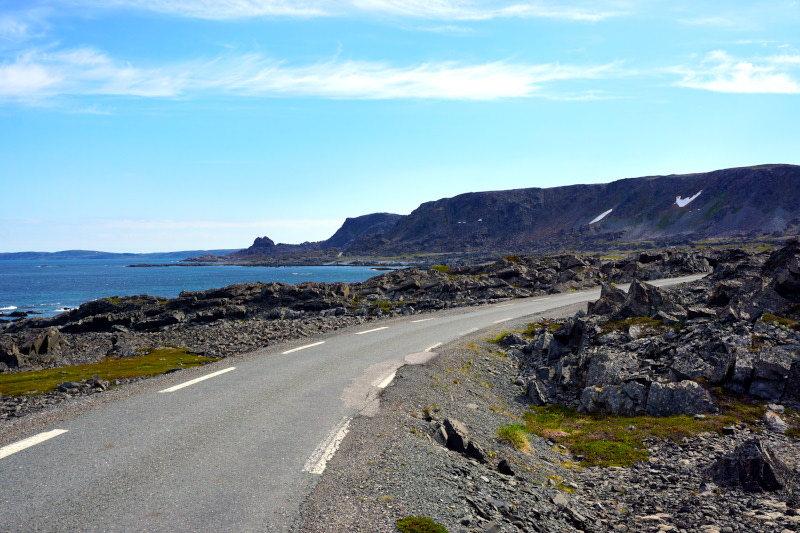





On the way back, we made a detour to Vardøya. On the island, which has been connected to the mainland since 1982 with Norway’s first underwater tunnel (length 2890 metres, deepest point 88 metres below sea level), lies Vardø, the easternmost town in Norway. It is home to the Steilneset memorial, opened in 2011. It commemorates the 91 people who were convicted of witchcraft in Finnmark in the 17th century and most of whom were executed. Right next door is the world’s northernmost fortress, Vardøhus. On its walls, the return of the sun (after about 2 months of polar night) is celebrated every year towards the end of January with two gun salutes. And the schoolchildren of Vardø even have that day off.

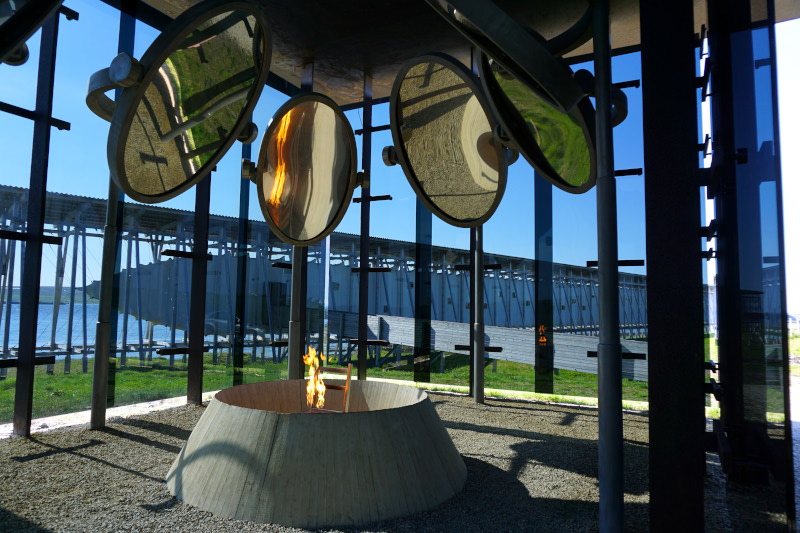


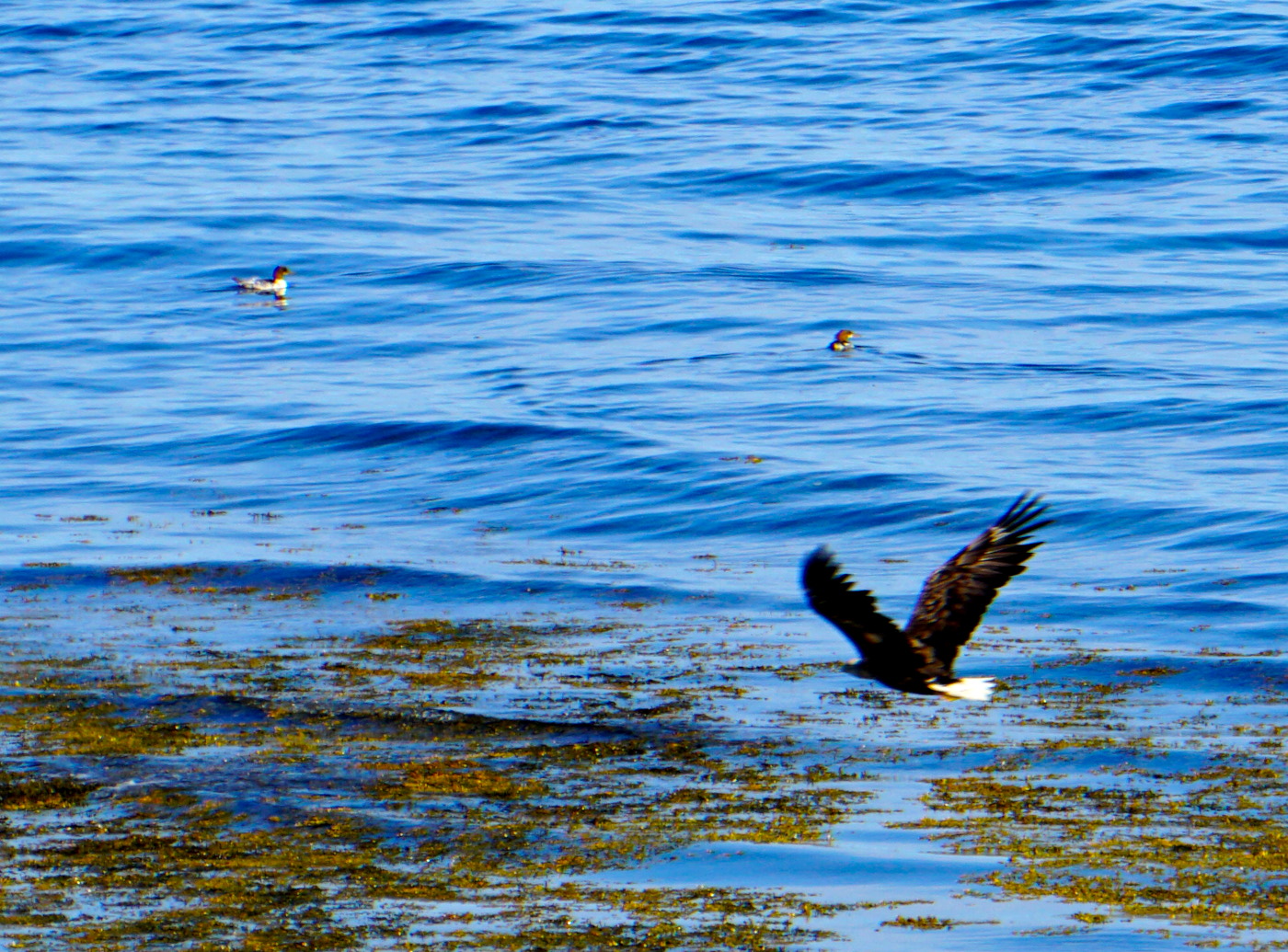
Until next time. 🙂


